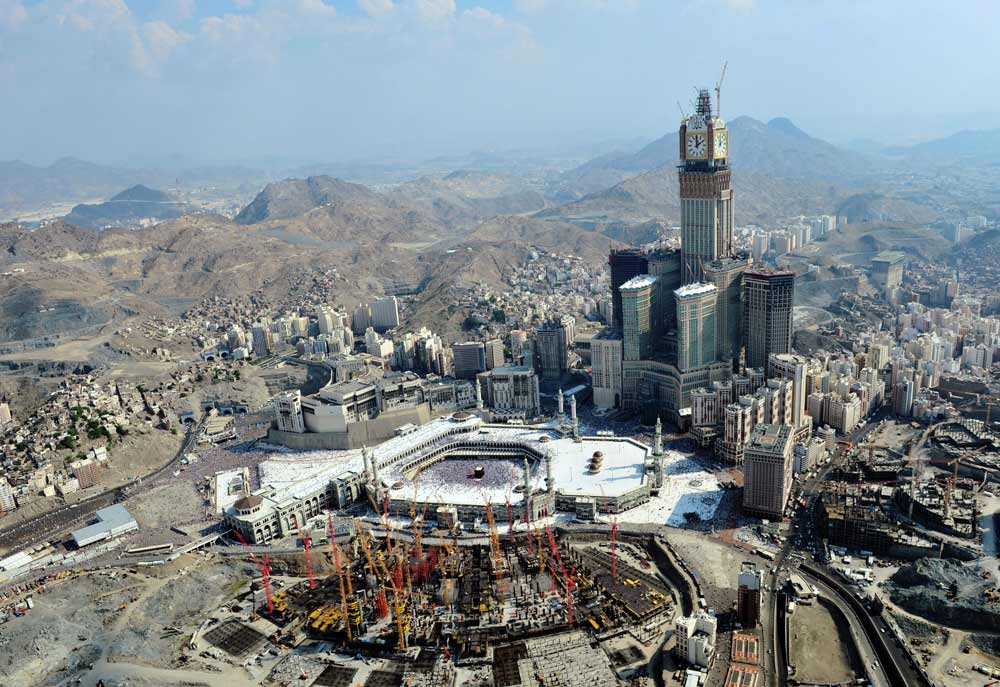One political analyst says he is not surprised that Saudi Arabia has hiked the cost for umrah visas, as the country is looking to boost religious tourism in the face of economic reforms. South Africans have been hard hit by the news of paying for umrah visas, which some say are simply too costly for the average Muslim traveller.
While first-time haj and umrah pilgrims will not be charged for their visas, repeat pilgrim visas are said to be charged at SR 2000, effective from October 3, 2016 (Muharram 1, 1438). According to reports published by Saudi media houses, among the new regulations, foreign visitors to the Kingdom will be charged SR 3000 for a six-month multiple entry visa, SR 5000 for a one-year multiple entry visa, and SR 8000 for a two-year multiple entry visa.
While travellers and operators have voiced concern at the steep prices, analysts say that Saudi authorities are working to diversify the Kingdom’s sources of revenue.
Saudi Arabia’s oil prices have dropped by over half since 2014 and the Kingdom has a budget deficit of over 100 billion USD. Over the past two years, the kingdom has cut energy subsidies, slashed public spending, and started to look for new ways to raise revenue outside of the oil sector.
Afro-Middle East Centre (Amec) researcher Ebrahim Deen says it is expected that the Kingdom would work toward diversifying its economy. He says that haj and umrah is viewed as a means of gaining revenue to recompense for the deficit.
“For Saudi to preserve itself, it needs to seek employment opportunities for ordinary Saudi’s and, unfortunately, haj and umrah is a means of gaining some revenue,” Deen stated.
Though he is not in agreement with the alarming price hike, Deen asserts that the Kingdom has provided first-time pilgrims with an opportunity to travel to the Kingdom free of charge and should, therefore, be lauded for making this consideration.
“They have made the exception for a first haj and umrah, which does give you, as a person who has saved, [the means] to do that. But generally if you are going for a second time you are generally more well off,” he added.
Turning to geopolitics, there is also Saudi Arabia’s military campaign against Yemen to consider. Saudi Arabia launched a war against Yemen’s Houthi rebels in March last year that is proving to have detrimental effects on its economy.
War comes with huge costs and Saudi Arabia recorded the highest budget deficit since the post-Gulf War period at nearly $100 billion (15% of GDP) in 2015, and projected its highest budgeted-for deficit yet for 2016 (13.5% of GDP).
Saudi Arabia’s siege on Yemen reduced critical imports such as food and medical supplies. Fuel prices increased due to the Houthis’ decision to completely lift oil subsidies, adding to the burdens of skyrocketing prices of basic commodities such as food and water since the start of the Saudi-led airstrikes.
Although the new visa charges are exorbitant, Deen says all stakeholders need to understand the need for Saudi authorities to impose price changes and urges them to instead call for engagement in order to compromise a viable solution.
“The United States visa is 190 USD, that’s R2000, so we need to review whether we are being hypocritical in how we complain,” Deen noted.
In light of criticism for the increased construction of hotels within the Kingdom, he notes that in his opinion many of the construction projects are not owned by the Saudi Government, but are instead owned by international companies.
“The Saudi government, I think, is gauging on the fact that the revenue that would have gone to the international hotels will go to the Saudi Government. So, they may get fewer pilgrims but they will make more revenue with the visa costs,” Deen continued.
The tourism industry currently generates about 2.7% of Saudi Arabia’s Gross Domestic Product (GDP), with religious tourists making up the largest group of visitors to the kingdom.
The Hajj and umrah pilgrimages contribute $12bn annually. That is projected to rise to more than $20bn within the next four years, according to the Council for Economic and Development Affairs.
The council predicts that the number of religious tourists coming to perform Umrah will grow from eight million this year to 15 million by 2020, and 30 million by 2030.
Until now, pilgrimage visas tightly controlled where and when pilgrims can travel in Saudi Arabia, but officials hope to loosen these restrictions.
“We’re working towards pilgrims visiting Saudi antiquities, such as Madain Saleh near Medina, after they have done their religious duties,” said Prince Sultan bin Salman, head of the Saudi Commission for Tourism and Heritage.
“But we also have attractions that will encourage tourists to travel much further and to visit other parts of the kingdom.”
VOC






 WhatsApp us
WhatsApp us 

